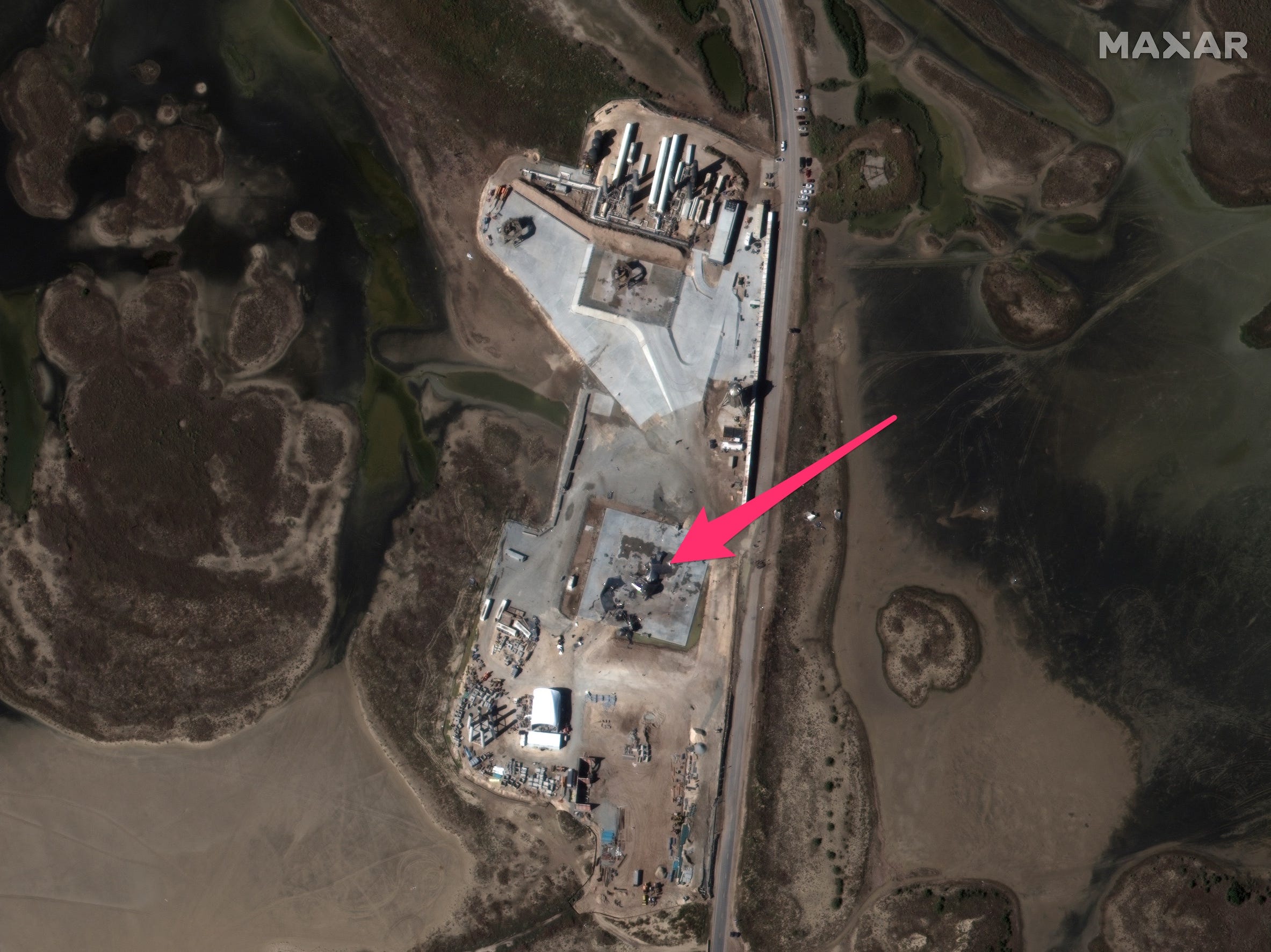
Satellite image (c)2020 Maxar Technologies
- New satellite images show SpaceX’s rocket facilities in Boca Chica, Texas, the day after a Starship test flight ended in an explosive landing.
- The photos show the charred remains of the prototype, including its nosecone, which Elon Musk wants to preserve “in memory” of the launch.
- A newer Starship prototype model fell over inside a vertical assembly building on Thursday.
- Musk sees the Starship and its Super Heavy launch system as a step toward Mars missions.
- Visit Business Insider’s homepage for more stories.
An ambitious test launch of a SpaceX spaceship ended in a stunning crash landing on Wednesday. New satellite images reveal what the aftermath looks like at the company’s rocket-development facilities in Boca Chica, Texas.
In the test flight, the 16-story prototype of the Starship spaceship – a version called Starship serial No. 8, or SN8 – hoisted itself from the launchpad and shot tens of thousands of feet into the air, higher than any Starship model before it. After about 5 minutes of traveling upward, the rocket tipped its nosecone forward, cut off the last of its three engines, and began to plummet back down.
As SN8 neared the ground in a sideways, belly-flop freefall, it started its engines again to flip itself upright and slow its descent. But the spaceship crumpled as it slammed into the ground, exploding on the landing pad.
Overall, though, the flight was a success, since it showed that Starship can fly high and use its wing flaps to keep steady as it falls through the atmosphere.
On Thursday, a Maxar satellite turned its camera to the Boca Chica facilities and spotted the SN8 nosecone lying beside the charred remains of the rest of the spaceship.
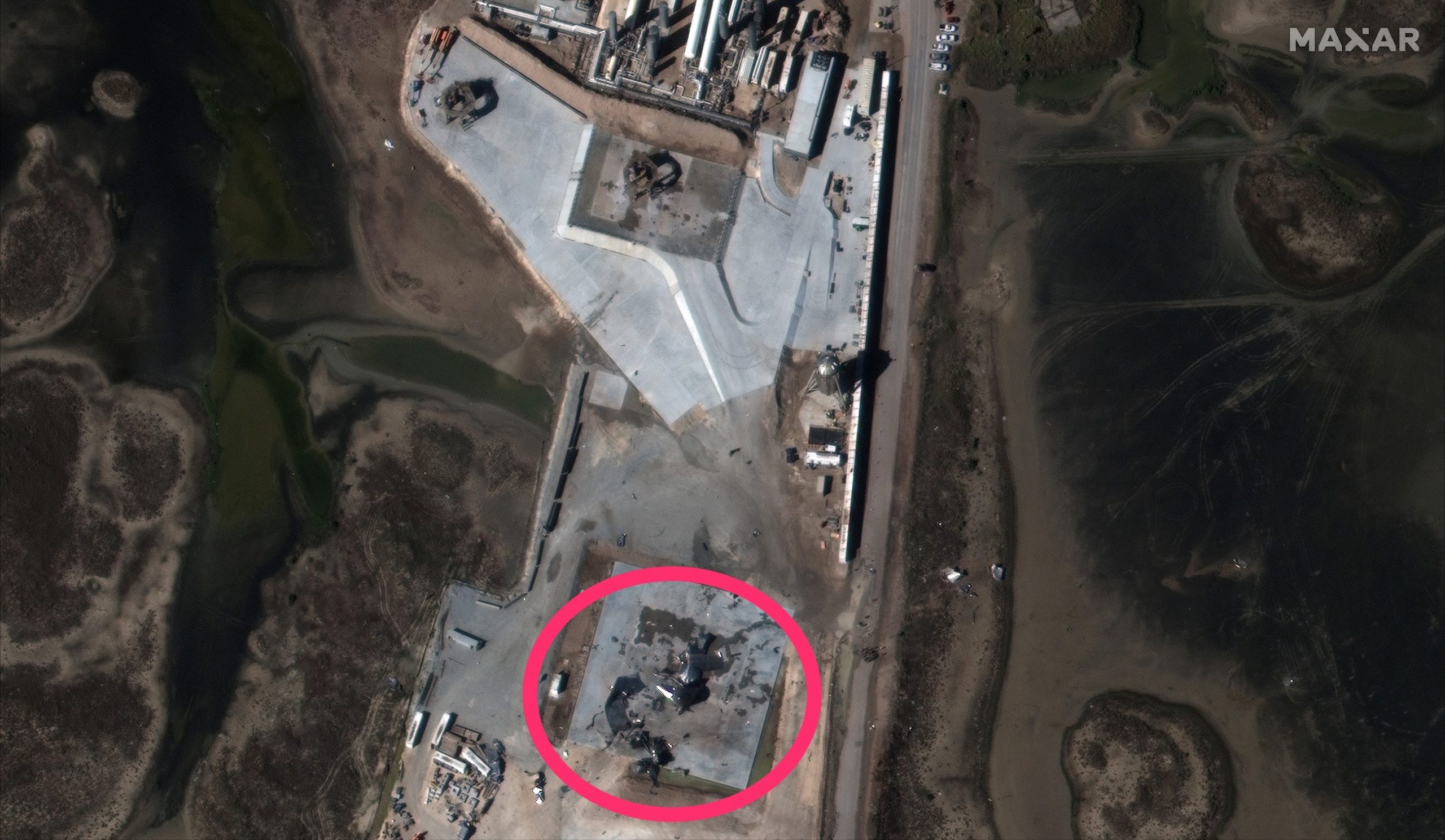
Several large metallic chunks of the rocket ship can also be seen in a marshy area just north of State Highway 4, which runs alongside the launch site and ends at Boca Chica Beach.
It's unclear what SpaceX plans to do with the rocket debris, but Musk tweeted on Thursday that the nosecone "should be preserved in memory of SN8."
A fully and rapidly reusable launch system
Until Wednesday, Starship prototype tests had involved mere "hops," with prototypes launching a few hundred feet into the air, then landing downrange.
The crash-landing in this scaled-up flight did not come as a surprise. Musk, who founded SpaceX in 2002, had previously estimated that the prototype had a 1-in-3 chance of landing in one piece.
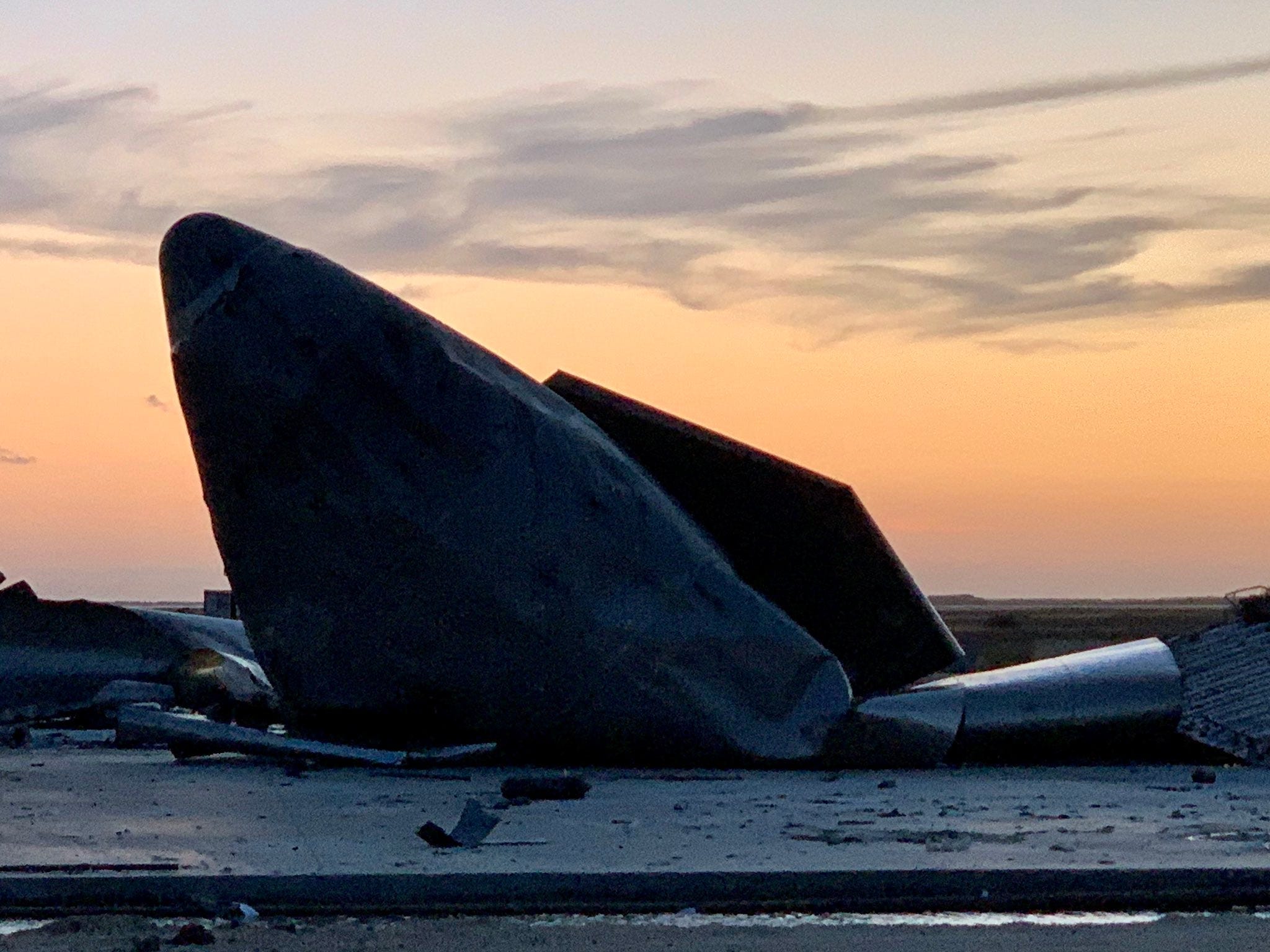
@SpacePadreIsle on Twitter
Eventually, SpaceX hopes to propel Starship to orbit via a 23-story rocket booster called Super Heavy. That behemoth lower stage may have more than two dozen car-sized Raptor engines in its final configuration. (Starship flew on Wednesday using just three.)
Musk has said that the Starship-Super Heavy launch system will be fully and rapidly reusable, helping slash the cost of reaching space 1,000-fold. If Musk's vision becomes reality, Starships could power round-the-world hypersonic travel on Earth, fly NASA astronauts to the moon, and cart humans to Mars.
"Mars, here we come!!" Elon Musk tweeted after the crash landing.
But first, SpaceX likely has years of development and testing ahead.
The next Starship prototype has tipped over
The Maxar satellite also captured an image of an even newer version of Starship, the SN9, standing up in a vertical assembly building. This is the next prototype SpaceX is expected to launch - and soon. SpaceX told Cameron County, in which the company's facility is located, that it wanted to transport that SN9 to its launch site as early as Monday, according to a road closure notice.
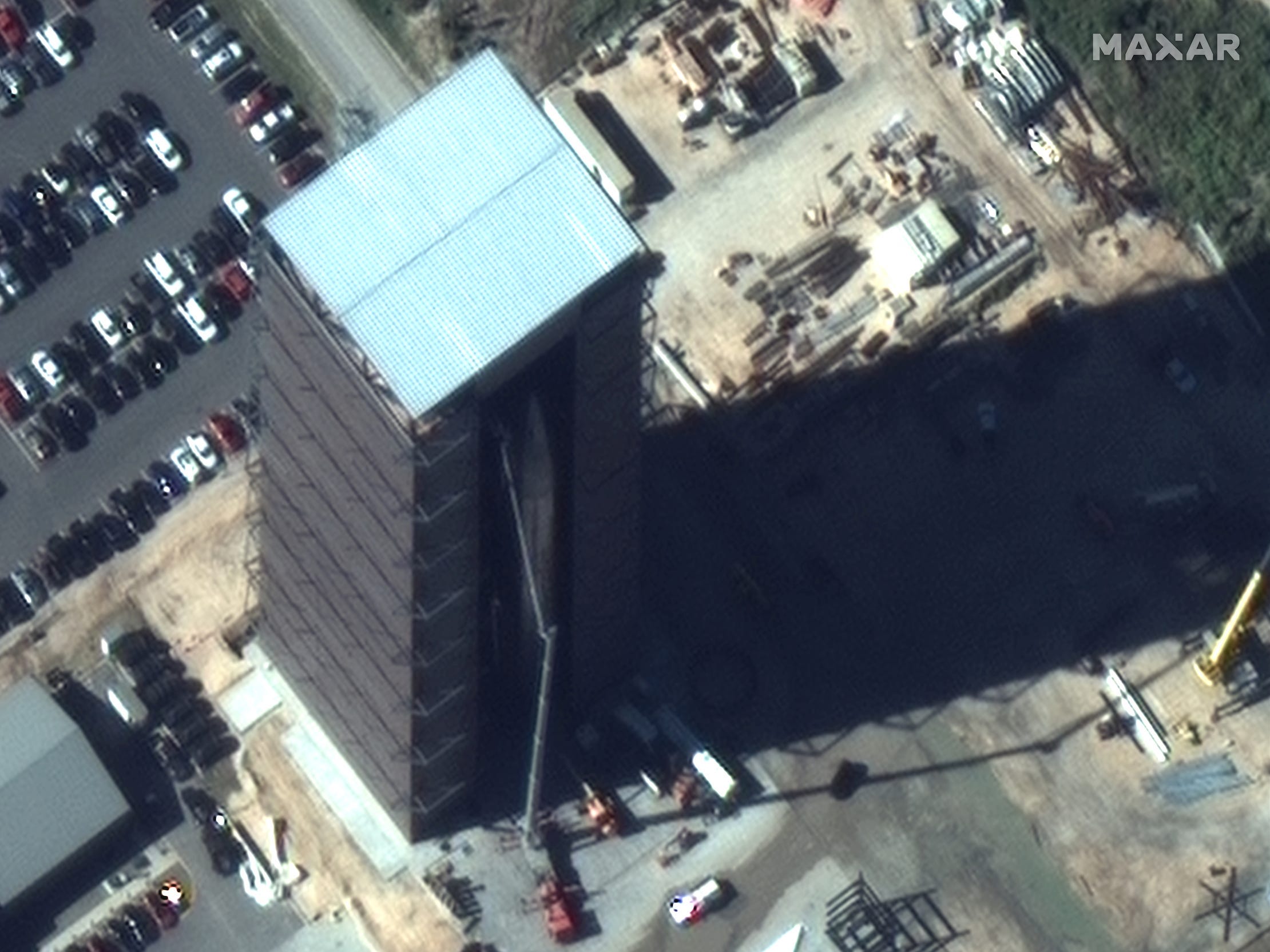
Satellite image (c)2020 Maxar Technologies
By Friday morning, however, that prototype had tipped over and fallen into the wall of the building.
The Twitter account SpacePadreIsle, which often shares photos and video of developments at SpaceX's facilities, also posted new recordings of the fallen SN9. A tweet suggested that the stand below the prototype had failed.
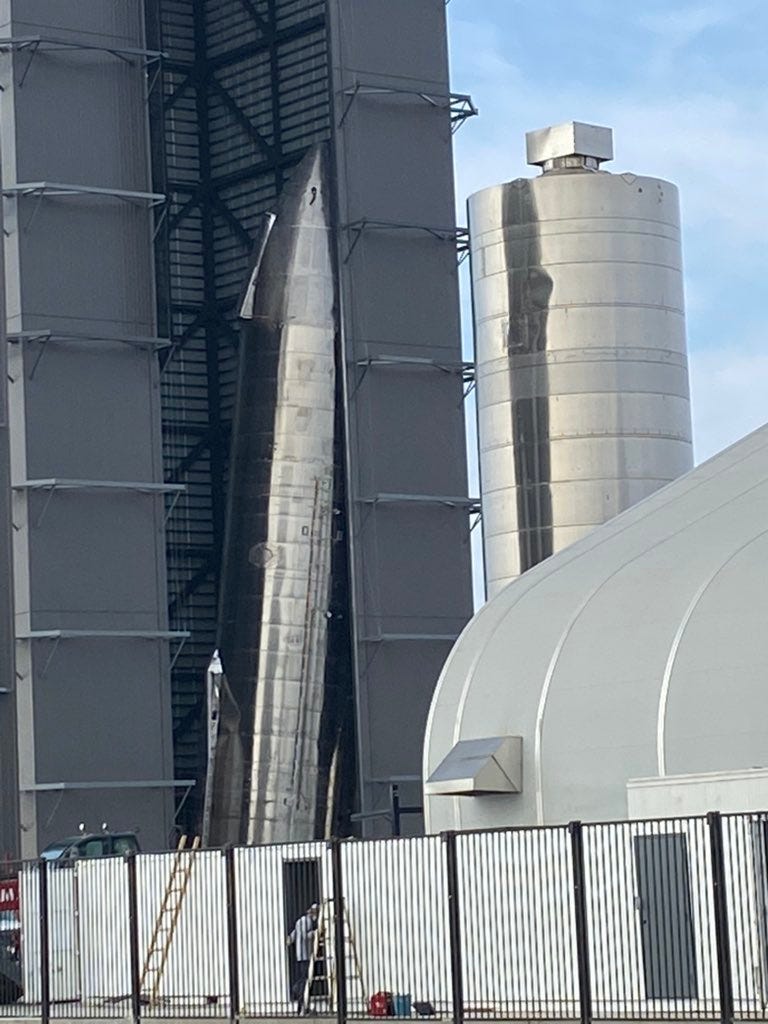
@SpacePadreIsle on Twitter
SpaceX did not immediately respond to Business Insider's request for comment, and Musk hasn't yet publicly acknowledged the fallen SN9. But after the success of the SN8 test flight, the company's rocket development process seems only to be speeding up.
In an interview with Mathias Döpfner, the CEO of Axel Springer (which owns Insider Inc.), Musk said SpaceX hoped to land a crewed mission on Mars in 2026.
"If we get lucky, maybe four years," Musk said. "We want to send an uncrewed vehicle there in two years."
